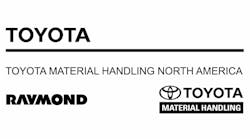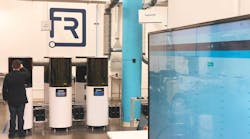Printing a CAD file for a non-functional prototype is a relatively straightforward process. Going from concept to proven, production-grade products for an entirely new product development and manufacturing process is not.
To help you understand what to expect when adopting additive manufacturing (AM) production, we’ll shed light on the stages and decisions involved when going from concept to on-demand production at a global scale for a part or product.
While the specific process for each part or product is different, projects fall into three general categories:
1. Quick-turnaround production and prototyping
Example: An approved CAD file for a prototype or part already exists—and you need to receive the part in 30 hours
2. Modifying an existing design to optimize for AM
Example: You currently produce this part with injection molding but think you could simplify your supply chain and eliminate warehousing costs by producing it on-demand with additive.
3. Designing a new part or product from the ground up with additive in mind
Example: You have a concept for a new part that you want to produce with AM for one of two reasons: either because it’s not possible to produce with legacy manufacturing methods or because the economics of AM are favorable for low-to-mid volume production.
Designing a new part from the ground-up for additive production offers the greatest opportunity for performance and cost benefits. While it tends to be a longer process, starting with a blank page allows you to fully optimize the part using design for additive manufacturing (DFAM) principles.
If you work with an additive manufacturing partner, in both the second and third approaches, they will verify the file for full-scale production according to your requirements—which might require a comprehensive production part approval process (PPAP). After that, subsequent orders become a simple, quick-turn production process.
The part and production of design process for AM: A brief overview
Each of the three approaches follows a different product development process. We’ll go over the process for modifying an existing part for additive manufacturing:
Step 1: Identify parts with a strong business case for AM production
Let’s say you want to qualify an existing part for production-grade additive. High-turnover spare parts are good candidates. While the original part might be made with injection molding, spares can be made to the same performance standards with AM technologies. And because additive allows you to order in quantities of one, you can reduce warehousing costs and adopt never-out-of-stock inventory programs.
Step 2: Design your part
When spare parts are modified for AM production, the geometry of the finished part must be made to fit seamlessly into an existing assembly. In these cases, the real design work isn’t making significant changes to the shape of the part. Rather, it’s performing minor design modifications to optimize for additive production and designing the build to ensure the finished part meets critical required dimensions. Throughout design iterations, if the part is out of tolerance for even one critical dimension (i.e., linear dimension of a clip or gap), it becomes a question of how you can redesign or re-orient the part to get a stable dimension. Essentially, you begin with the existing design and perform the reverse engineering required to qualify the existing design for additive production.
Step 3: Material and process selection
You’ll first identify materials that are acceptable for your application and then compare the AM technologies that can produce parts with those materials. Start with the performance requirements that your part needs (e.g., the modulus, the tensile strength, the compressive strength, etc.) and the environment your part will be in (e.g., in the elements, inside a compressor, etc.), then come up with a list of materials that are suitable for the application. You can then compare the AM technologies that are able to produce parts with those materials. When multiple processes and materials are acceptable for an application, a production partner can print sample parts made with each of those technologies and let you determine which you prefer for full-scale production.
Step 4: Iterative production design and testing
After you’ve chosen a list of acceptable materials and processes, the production engineering process begins. This involves understanding and locking in the variables of the print process until you’ve reached the level of dimensional accuracy, performance and appearance that’s required for full-scale production. You might go through multiple iterations to get to the desired output. Once you have a part that meets your requirements, and it’s verified through PPAP testing if needed, all the production information can be compiled into a virtual tooling package. that contains information about printing parameters, post-processing and packaging considerations. It may also include information on support structure design, what tools to use for support removal, what media mixture to use in surface finishing, the number of coats of paint, cure time and even how to jig a part in the oven. All of these details dial in the parameters necessary to print the part reliably, anywhere in the world.
Step 5: On-demand production and global fulfillment
After your part is approved, it’s ready to be produced when demand necessitates production and delivered globally. If at any point in the product development process, the part fails to meet your expectations—in performance, dimensional accuracy or appearance—it’s time to go back and analyze what went wrong and how to design failure out of the process.
If you want to continue exploring AM, our infographic showcasing the AM technology landscape can help you get a jumpstart on process and material selection, organizing AM machines by production material.
John Nanry is the co-founder and chief product officer at additive manufacturing company Fast Radius, leading the product and application engineering teams. Fast Radius is recognized as one of the 16 best factories in the world by the World Economic Forum (WEF).
To learn more about incorporating additive manufacturing into your operation, join IndustryWeek at the Manufacturing & Technology Conference & Expo for the keynote session by Lou Rassey, CEO of Fast Radius. To register for the conference or expo, visit:www.mfgtechshow.com.










